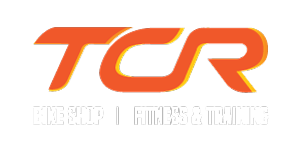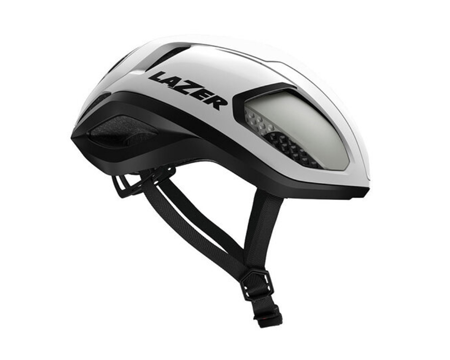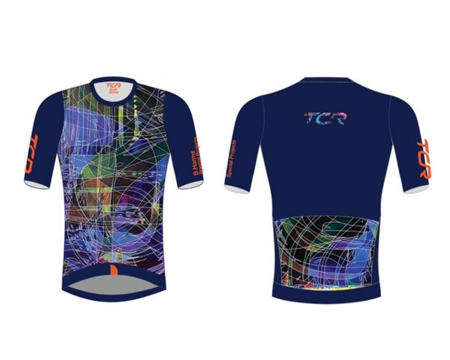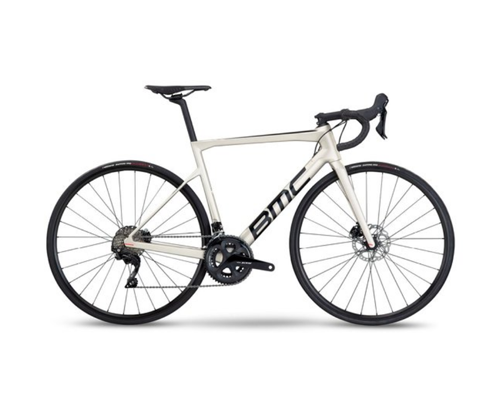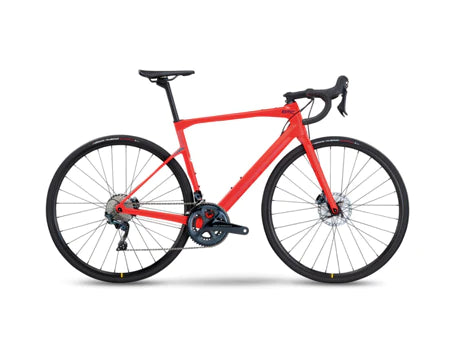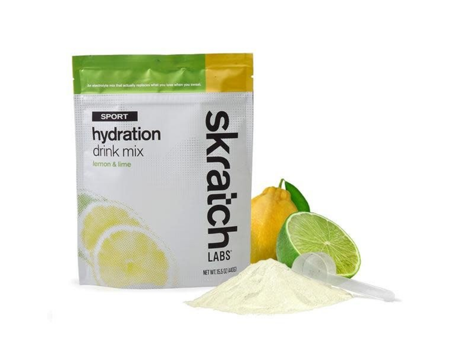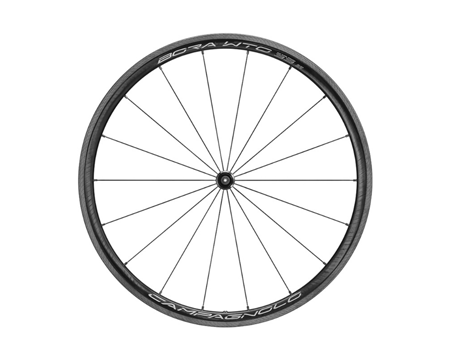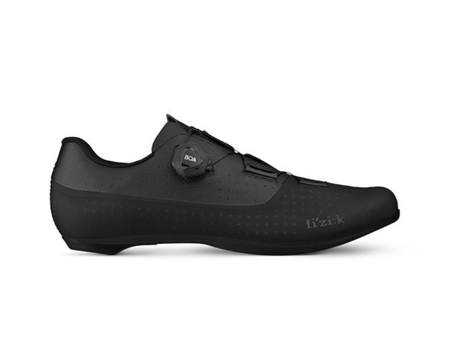Tales from Track Center
Part 3. Qualifying
by Dan Peters
Commonwealth Games and 14 hours
The Commonwealth Games were my first major games, In the grand scheme of events, it’s pretty small in participation and coverage. The Pan Am Games and Winter Olympics are far larger than the Comm games. What doesn’t feel any different is the logistical hurdles and security. Every point of entry is a security check point. Competition venue, infield of the track, village, dining hall of the village, busses and transport, team storage area. As a mechanic, you normally are carrying something heavy or a lot of small things in both hands. Stopping every 50 feet to show an accreditation is a real pain. What I quickly learned was to just stop and chat with every security volunteer. If they recognized me and knew I was a Canadian I could just start walking through. The exception was always x-ray machines. You can’t talk to those.
A few of our track riders here were experienced and proper racers. Most of our team was really new to international track. The reality of this resulted in a horror crash during training before competition even started. Training sessions on the track are shared times for several teams. For example Great Britain might share the track with New Zealand and two smaller teams like Barbados and Surinam for a total of 45 riders in a 1.5hr training session. The next session might be Canada, Aussie, and two smaller teams. During our training session, one of our riders from BC was coming in around the track at full speed. He was down on the pole line (smallest ring of the track) and foolishly had his head down. Somehow, at the same time the start gate was rolled up onto the track and standing nearby on the actual track boards was a volunteer. In these situations a volunteer or commissar is to stand on the track when the gate is on track. The volunteer is to look towards the oncoming riders with a flag and whistle. The purpose of that flag and whistle is of course to alert riders of the 100lb start gate and potential staff/riders on track. Unfortunately for us and a Glaswegian volunteer, the volunteer had not been properly trained. They were looking at the start gate and facing the wrong way. Our rider had not been properly trained, he was riding with his head down in an open training session. The two collided with our rider Nic Hamilton going at high speed.
Both Nic and the volunteer ended up in the hospital. I don’t know much about the long term health of the volunteer but Nic’s career essentially ended there. He had long term concussion symptoms and went from racing pro in the US on the road to becoming a mountain guide. I haven’t talked to him for nearly ten years but his sister Sue lives in Calgary, I understand Nic is doing well but never fully recovered. In comparison to this crash, my memory of the track racing there is hazy. I know we had good results with Jasmin Glaesser and Zach Bell. Of note, a technological renaissance began with our team at those Commonwealth games. When Jasmin arrived to the games she brought with her a new set of bunch handlebars. These were a set of drop handlebars that had additional carbon fiber molded onto the tops to make pseudo “hoods” like we have on road bikes. These bars were manufactured by Roberts Composites in Vancouver BC. The same place that TCR sends all of our frames in for repair, or rather customers frames for repair. Like an idiot, I never took a picture of these but some internet searches found her racing them in 2015.

This handlebar allowed for the now commonplace “puppy paws” position that we see on 100% of bunch racing bikes in the modern era. Another company (3T) had mad a similar bar but it was grossly against the rules and never raced.
Before we even used this bar in a race, we had a bit of a battle with the UCI. At that time, as it is now, any product used in racing must be commercially available. However in those days that rule was a bit more fast and loose. Furthermore, the British team was riding a bike that was absolutely not available in any bike shop or online. It was specifically built for them and no more were produced for sale. This glaring omission to the rules being followed was always our ammo for arguing something bespoke on our bikes. After some back and forward with the UCI and a panicked email to Rob Mulder of Roberts Composites to put the handlebar on his website for sale, we were able to race that handlebar for a few years. By 2019, every “bunch” handlebar had this design or one like it.
Because this was a multisport games, we had MTB and Road to deal with as well. For the duration of the games I was joined by Adam Trotter. Adam is quite possibly the best MTB Mechanic in Canada. Adam has worked professionally in DH, XC, and enduro for the last 25 years. When other people in the sport learn that I worked in cycling, the first question is usually “Do you know Adam Trotter”? He is like the real life “Do you know Tyler Durden”? I would get to work with this legend on and off for the remainder of my career.
After the track events, MTB and road races were completed with little drama. We did well in MTB and had a mediocre showing on the road. The road race course was memorable in that it went through the steep pitched roads of Glasgow and in several occasions our team director and other directors got air in the car while descending the terraced cross streets on the course. As the saying goes, the fastest car in the world is a rental car.
The Comm Games was at that point the hardest most grueling event I had done. We had trained in LA, then northern Holland, then I drove to Glasgow from Newcastle after taking the ferry. We did the games for 14 days, then I loaded up the van and began the trip back to Belgium and on to Canada. It was in this trip home I really learned the meaning of tired. Having driven back to Newcastle and been the first vehicle on the ferry, I made my way to my cabin at around 5pm. I thought this was perfect, I could have a nap and go for dinner at 7. As it happened, I laid down for a nap and without an alarm actually woke up at 7 just in time for dinner! Making my way to the upper deck of the ferry to the restaurant I noticed that somehow the sun was rising. It was breakfast and I had just slept for 14 hours! Since those games, I had plenty of other grueling campaigns, some harder like the 90 days in a row I worked in 22’. We do get tougher with age and I never had a 14 hour nap after that first one in 2014.
Milton Velodrome and Hugo's Power
In the fall of 2014 the Milton velodrome was slated to open for the upcoming Pan Am games. Myself and most of the staff had moved to Milton or the surrounding area as we built a DTE “Daily Training Environment”. One central place to organize all of our equipment, staff, and resources. We had track time booked 5 days a week and everyone in place to run those training sessions. That fall we knew the Pan Am games in Summer 2015 were fast approaching as well as the world championships in Feb of 2015. Those Summer games were going to throw a real wrench into our fledgling operation.
The setup and tear down of facilities for a major games takes somewhere in the range of 6 months as I learned. That seems long but that was just how it was. Overlay for Toronto 2015 had to be put up everywhere, signage, additional seating and temporary grandstands, concessions, and security. This turned our new track into a construction zone. For a couple of months the team and myself weren’t allowed into the building, I actually moved all of our equipment into the basement of Milton city hall. Basically a 500sqft boiler room. We still needed to travel and race internationally through those fall and winter months so we again traveled to Los Angeles and then abroad for races. When we returned I would put everything away in the basement of city hall. During those fall/winter months of 2014/15 I have a few real standout events that were memorable. The first was Guadalajara world cup. At this race, I had the first really serious muck up on my part as a mechanic. I learned the most valuable and lasting lesson at that race of my whole career.
During the Keirin, we had a rider named Hugo Barette. Hugo was ready on track at the start of the event with his coach Erin holding him on the start line ready to go. As the gun went off and Hugo pulled on his bars, pushed on his pedals and accelerated to get in position, his handlebars snapped off in his hand. Commissaires seeing this immediately double fired the start gun to signify a recognized mechanical. The heat was stopped right there. I ran to the track side to collect Hugo and his bike, the broken bar and frayed ends of carbon protruding from it. Taking the bike back to our pit and beginning to form a strategy, I realized I didn’t have a spare. Mike Patton was in the stands with the video camera filming the heats. He would later tell me he saw the moment of panic in my body as I realized I didn’t have a solution to this problem. The unique situation of this handlebar was the real challenge. The stem on his bike was very specific to track at that time and had a face plate that was around 5cm wide. This meant the area where the bar clamps needs to be very wide, far wider than any other bunch bar in our pit and wider than any road handlebar on any of our bikes. In this mad scramble, I was able to borrow a set of totally round and wide road handlebars from the Irish team. Straight off of one of their road bikes. I worked with the Irish mechanic Sandy who used to be Canada’s mechanic to remove those bars, undo the bar tape and remove the hoods and install it on Hugo’s bike. The commissaires ran the other heats during this time and placed Hugo’s heat at the end of the series of 6 heats to give me time. I distinctly remember him telling me that this alloy road bar wasn’t strong enough and that he would break it. His coach and I told him it would be fine and to just ride. Hugo ended up placing second in the race, a career best result for him.
I was able to find the replay of the finals of that race online but the qualifier where he broke the bar is nowhere to be found. Scroll to 34:35, ends at 39:05.
https://www.youtube.com/live/O8hhHIAffO8?si=Vo8Aud85vNZGH8NL
The lesson learned was to build in redundancy, when possible redundancy for that redundancy.
New Zealand and Calgary's Allison Beverage
The second really memorable moment of the 2014/15 track season was a trip to NZ where Calgary’s own Allison Beveridge won the Omnium. We as a team didn’t win individual events all that often. Team pursuit, yes, Individual, no. At that time Allison was a good up and coming rider but had yet to score a big result on her own. Despite being so far from Europe, the field there was still strong, Allison shared the podium with Annette Edmonson from Australia and Jolene D’Hoore from Belgium. Edmonson would win the world championship in that event two months later and D’Hoore was one of the best road sprinters in the world at that time. This was also my first trip to New Zealand and a destination I would always look forward to after this first trip. So much so that I am organizing a trip there with TCR in February.
Hong Kong and check your tires
The final notable memory of that season was our trip to Hong Kong for the final round of the world cup. This was just a month out from the world championships in Paris. In Hong Kong, we won the Team Pursuit, something we had done before but this was notable for a couple reasons, first was that we beat the British. A team who we had been chasing for a while. Beating them there, and so close to worlds gave us a huge bump in confidence for our chances in Paris. More memorable or significant to me was what happened immediately after that win, I mean immediate, the riders hadn’t even left the track. After crossing the line and knowing they had won, Laura Brown and Jasmin Glatzer in their celebration collided causing Jasmin to crash. Neither myself nor the coach at that time Craig saw the crash very well, we only noticed when we heard the sound of Jasmin hitting the boards and sliding down to the apron. Fortunately Mike Patton had been following on the video camera from the stands and caught the moment.
In the confusion Craig believed that Jasmin’s tire failed and this caused her to hit Laura. I didn’t know what had occurred but when we arrived at the crash on foot Jasmin did have a flat tire. Craig believed that the puncture was my fault and let me know in rather blunt terms. “Dan, you are going to replace every god damn tire on these bikes when you get back to Milton. This cannot happen at worlds!” It was a shock for such a calm individual to get to angry, and with me especially. Craig later calmed down and apologized when Mike showed him the footage. I did not have to replace all of our tires but I was very picky about which ones we would replace leading into that world championships.
Those world championships a couple months later were not all that spectacular. It was a brand new velodrome in Paris France. This race was their grand opening. The roof leaked and competition was stopped while they fixed the issue and mopped up the water off the track. The Australian team pursuit squad won the race easily and set a world record in the process, I remember they rode a 4:15 over the 4km. It was an outrageous time, and the next best team was seconds back, included us. We believed that record would stand for years. But little did we know that Canada and the other top four teams would best it just over a year later in Brazil.
Road to Rio via Pan Ams
The remainder of 2015 was some hard work and stressful for all involved. Qualifying for the Olympics in Rio was at the top of our priorities. For the women this was easy, they had already qualified. For our Men’s team and sprinters this was not such a sure thing. Every race counted, every point, every position. We needed a rider at every race start and for them to do better than they had the previous two years in each of those events. For our men and sprinters (male/female) we had three really awful catastrophes that set us back or cost us an Olympic spot. On top of this, we had also just started a road team for the men and sent them to Europe to race road bikes. This meant road bikes, TT bikes, spare parts, spare bikes, wheels, everything. A huge undertaking to add to the heavy load of the track program. We also had a long spring of road racing with our women’s team which included a trip to the tour of California. Finally, we needed to do the Pan Am games in Toronto that summer.
The Pan AM games in Toronto were my second major games. This event was also one of the most successful events I was ever involved with as a team. We topped the medal table for cycling with 20 medals, 11 of which were gold. If anyone ever argues that the home field advantage isn’t real, I will fight them.
It was during these games that I had my most memorable wheel change in a race. During the women’s time trial I was following Jasmin in the team car with Craig the coach. Jasmin was descending a small dip in the road and got a front flat. The coach, all the spectators on this part of the road, and I saw it. We stopped the car very close to her and I ran out with the front wheel in hand. My change was very fast, about 25 seconds from leaving the car to pushing her back up to speed. We calculated that the flat cost her around 35-45 seconds of disruption. The same amount that she lost the race to the late Kelly Catlin.
We also had a spectacularly dumb crash in the men’s sprint with Hugo Barette. This crash led to the most prolific pictures of me on the internet. Still to this day if you google my name images of me fixing Hugo’s bike after that crash will pop up. What occurred was a small touch of wheels between Hugo and his competitor in the race, at relatively low speed, 10-15km/hr. Hugo hit the deck and in doing so his fork and bars turned hard and the head tube of his bike cracked. An unrideable machine now. Realizing this when I pulled him off the ground I rushed back to the pits seeing that Hugo was okay but his bike definitely wasn’t. Because these games were fully televised and the competition schedule was reliant on this event completing, I was joined by the CBC in our team pit. For the next 5-10 minutes, CBC broadcast the work of building Hugo a completely new bike. That may sound short to you dear readers as most bikes do in fact take over an hour to assemble. In this instance I was joined by our other mechanic Adam Trotter and my direct superior Chris Eastwood. Furthermore, the process was expedited because I could take his complete saddle/seatpost and transfer it to the new frame as well as his handlebar and stem with his existing position. We still needed to mount wheels, chain, chainring, and pedals. Hugo would go on to win this competition overall in addition to a win in the team sprint and third in the Keirin.
You recall I mentioned our challenges in qualifying spots for the Olympics the following year, those three catastrophes.
The Three Catastrophes
Catastrophe 1. Kate O’brien and Monique Sullivan (both native Calgarians) were racing and trying to get a team sprint spot for the games. At the Pan American championships in Chile 2015, the timing system just happen to fail while they were racing. It worked for all the other south American teams of course! Hand timing was used for their final and they ended up off the podium as a result. Our protests to the commissaires and UCI was fruitless. Kate and Monique would end up getting their spot but just barely through success at other races that season.
Catastrophe 2. While in training, our men’s omnium rider Remi Pelletier-Roy would have a bad crash in training breaking his collar bone just before the Pan Am champs and the winter 2015/16 season. We needed to place another rider into the races and Barrie’s Ed Veal was selected. Despite his best efforts Ed wasn’t up to the level to get the points for Remi’s spot and we ended up just outside the qualification. Remi never made it to the games and retired shortly after. He is a successful surgeon in Quebec now.
Catastrophe 3. We had travelled down to Cali Colombia for a world cup in that 2015/16 winter. During a training session, Hugo Barette misjudged his line on a fast lap and ended up flying up the banking in a corner at speed around 60km/hr. Hugo crashed though the metal railing at the top of the track and flew into the stands. From this crash he broke his collarbone and scapula, got himself a concussion and missing teeth, and punctured a lung. It was a horrifying crash to witness and respond to. Hugo would spend weeks in a Colombian hospital and eventually make a full recovery along with some minor plastic surgery. This crash set him back 6-8 weeks and somehow, by the skin of his teeth he ended up qualifying for the Keirin in Rio.
Ready for Rio
That track season ended in Feb of 2016 at the world championships in London England. This was a best ever worlds for us, even to this day almost ten years later. 2nd in the women’s team pursuit, 3rd in the individual pursuit with Annie Foreman Mackie, 3rd in the scratch race with Steph Roorda, and 2nd in the points race with Jasmin Glaesser. It was really confidence inspiring for our big race and my first Olympics coming up just five months later.
Following these worlds, I would travel to road races, build new track bikes, argue with our bike supplier (Look), and generally deal with the growing stress around our camp leading into the Rio games.
